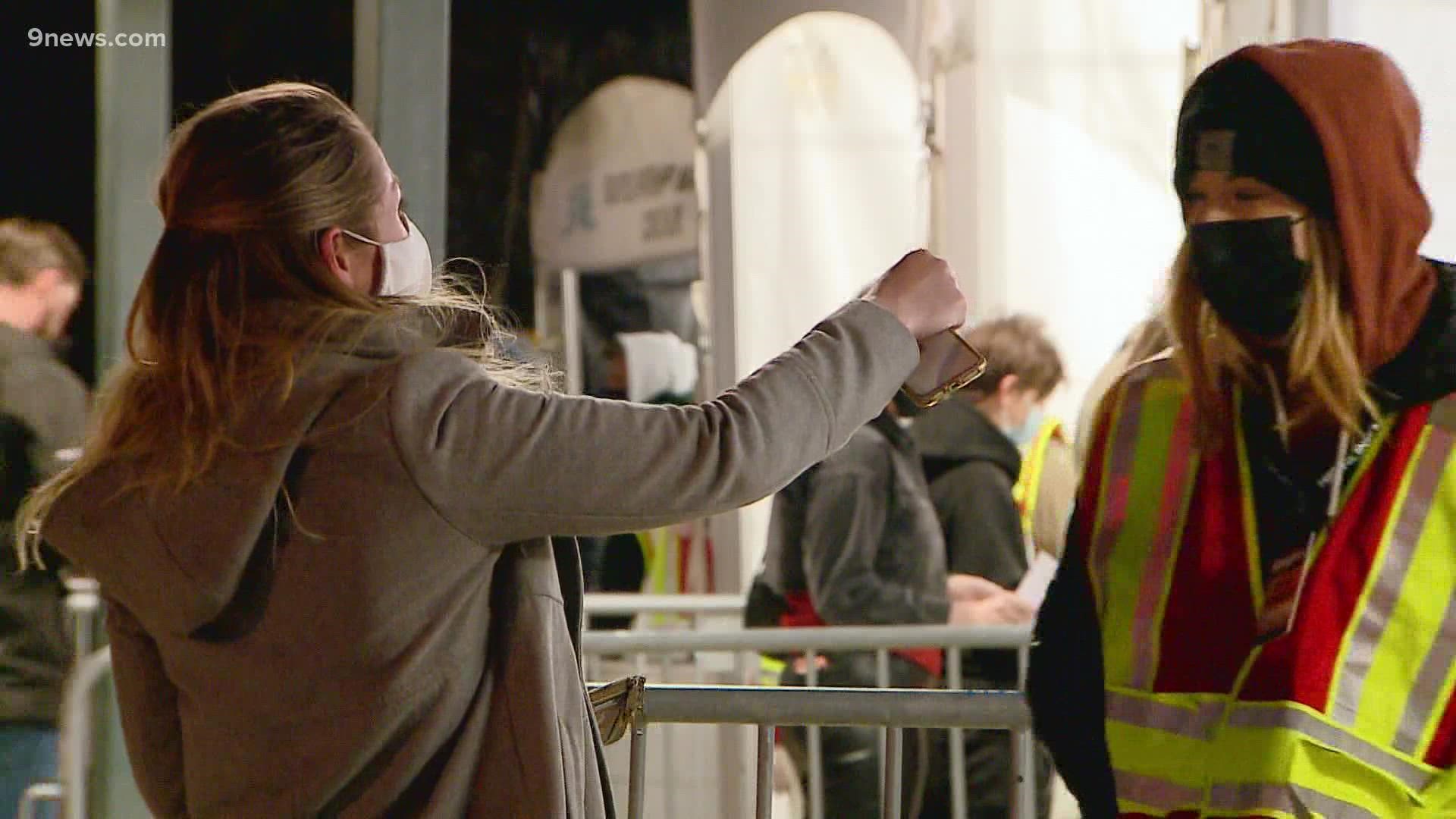DENVER, Colorado — A public health order released Sunday requires vaccinations at indoor, unseated events with more than 500 people in certain Colorado counties.
The public health order requires that everyone be vaccinated at these types of events in Arapahoe, Adams, Boulder, and Jefferson counties. The order also includes the City and County of Denver and the City and County of Broomfield.
The order will largely impact concert venues that have standing admission with 500 or more people. Many of these venues have already been requiring proof of vaccination or a negative COVID test within 72 hours of the event.
For instance, venues owned or operated by AEG and Live Nation already require vaccinations or a negative test. Both companies operate a significant number of venues that fall under the order: the Gothic Theater, Bluebird Theater, Ogden Theatre, Mission Ballroom and the Fillmore Auditorium.
Doug Kauffman, owner of the Bluebird Theater, Ogden Theatre and the Lion's Lair, said he is in support of the newest requirement.
"I agree with it completely. I think it’s a great move to make," Kauffman said. "It’s going to cause people to get more vaccinations, cause more people to get vaccinated. I think it’s a good thing. It makes going to shows safer."
The National Independent Venue Association (NIVA) has also been pushing for a mandate.
"We want our communities to be as safe and healthy as possible. We were closed for over 18 months and with zero revenue, so right now, this isn’t a political fight for us. It’s a fight for survival, survival for the whole industry. So whatever we have to do to get our community safe and healthy, we are willing to do," NIVA Rocky Mountain Vice President Chris Zacher said.
Zacher said the association is unclear as to why venues were targeted versus other types of gathering spaces.
"We’re not really understanding the order, I think, because if you put an order in place that only affects venues over 500 but you aren’t doing anything for bars or restaurants or grocery stores, then really what are we trying to accomplish?," he said.
Many artists are now putting in their contracts that guests must show proof of vaccination or a negative test. So at this time, the directive won't make a huge impact on the operations at many of these facilities.
CDPHE said it's the first step to stop widespread transmission events.
"As this rapidly evolves, we are evaluating the areas where we can have a significant impact rapidly, and what we know is in these large events particularly, unseated indoor events, that puts us at incredible risk for a large superspreader event to occur, and this is why we took the action that we took," Incident Commander Scott Bookman with CDPHE said.
The public health order takes effect Friday and will be effective through Dec. 31. It applies to everyone 12 and older.
The public health order allows venues to accept negative COVID-19 tests as an option until Dec. 1. After that, the venues will need to require proof of full vaccination.
Why is the order for unseated events?
Jude Bayham, a Colorado State University researcher who is part of a team modeling COVID-19 transmission data for the state, told Next with Kyle Clark Monday that initial modeling shows people are coming into contact with each other at these large unseated events more than initially estimated, creating the potential for more spread with so much virus in the community.
Bayham said while the specific health order may not impact the current surge of new cases and hospitalizations, data from past public health orders have shown it may change some behaviors simply by getting people’s attention.
Investigating cases that swell from these large events can be difficult, public health experts say. Contact tracing and case investigations typically happen on a local level, while these large events can draw people in from many geographic regions.
“Those positive cases can be distributed across multiple even state jurisdictions,” said Glen Mays, a professor of health policy at Colorado School of Public Health.
“It can be multiple public health agencies doing those case investigations and contact tracing and more difficult for them to see patterns in terms of people who were at the same event.”
Mays said contact tracing efforts have evolved throughout the pandemic – especially figuring out better ways for public health agencies to make these connections.
“There’s been some significant improvements in technology and also just in standardizing the protocols for how we do this work across multiple public health agencies,” he said.
SUGGESTED VIDEOS: COVID-19 Coronavirus


